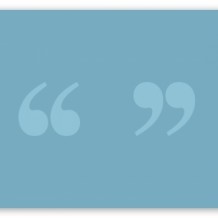3 Tips for Great Testimonials

If you’re a freelancer, a small business owner or professional, testimonials are a great way to authenticate your claims of expertise. Although there is usually an implied bias – not many people would post negative reviews on their website, a great testimonial can nudge an on-the-fence prospect in your direction by helping them overcome a nagging sales objection. Testimonials can also further describe what you do and how you do it, while sharing information about the type of clients you typically work with. Plus, testimonials that share a real name and real experience add to your credibility.
Your goal with testimonials should be to provide prospective clients with tangible (i.e. fluff-less) input about you and your work. Your testimonials should be relevant, believable, trust-generating and support your statements about why clients should hire you over the next guy. Here are some ways to get excellent and effective testimonials from your clients:
1) Pick the Right Clients
Not every client makes a good candidate for an effective testimonial. Limit your testimonial requests to clients you’ve worked with for a reasonable period of time, have an understanding about what you do and who you target, and are willing to be publicly identified as a client. Ideally, you will have a few clients who have a great story about you and your services and what they’ve gained by working with you. These clients should be your top picks.
It’s also a good idea to share a little background information with your clients about what you plan to do with the testimonials and what impact you hope they will have when you make the request in order to set the tone.
2) Use a Survey Form
Some people prefer to share in freeform mode. Others need a little encouragement to get going. You can use a survey form or questionnaire to get the client started and guide them as they tell their story. A standard format also gives you a little help when it comes to compiling multiple testimonials. You can even use a multiple-choice survey and post the actual results as a report card to support the testimonials.
3) Keep It Short and Sweet
Your testimonials don’t have to be long to be impactful. If you have text-based testimonials, make them eye-catching with bulleted text. And if you use audio or video, aim for easily digestible pieces – two minutes or less is an effective length in most cases.
Ideally, your testimonials will bolster what you already say in your sales copy and portfolio, showing potential clients what you can do and how it will help them personally. And once you have them, there are a lot of ways you can use testimonials in your marketing efforts.






